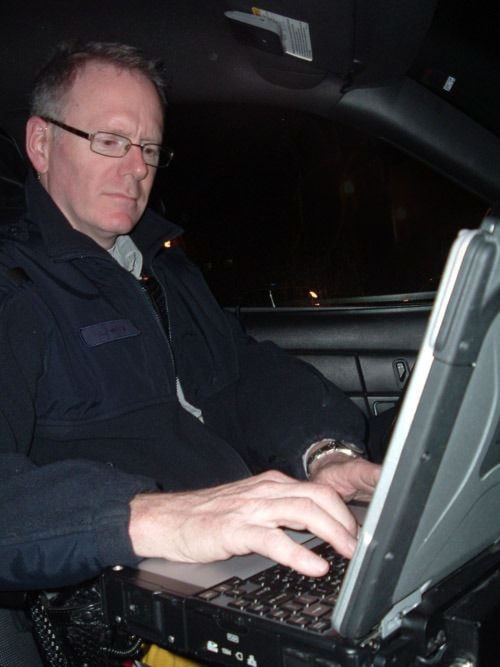It’s not like an episode of COPS or CSI or NYPD Blue. There’s no neat wrap-up at the end of an hour, where it all comes together in a tidy package. There are no DNA tests being rushed back in a matter of hours, no vast stores of unlimited manpower or “science-fiction” like technology that gets whipped out of the back room in the nick of time.
There are however a devoted collection of individuals who bring a variety of skills, training, equipment and personalities to tackle the task at hand. The task being to uphold and enforce the criminal code of Canada and thereby keep its citizens safe.
“We’re basically everything, to everyone at all times,” said Lake Cowichan detachment Cpl. Krista Hobday. “We are the last resort.”
On a recent ride-a-long with the North Cowichan detachment in and around the Duncan area I was able to get a small taste of the Valley from the other side of those strobing blue and red lights. In a 12 hour shift officers must handle whatever the fates toss in their paths; everything from speeders and impaired drivers to attempted suicides, assaults and drug overdoses. They encounter violent people, out of control from a combination of alcohol, drugs, mental illness or all three. They encounter average citizens, ticked off that they were caught speeding or relieved to see help arrive after an accident or assault. They must approach each complaint with the same high level of experience, caution, and concern while still maintaining an open mind.
“We got about 17,000 complaints last year in Duncan alone,” said Const. Barry Fulford. “The vast majority of our problems stem from alcohol, drugs or mental illness. In Duncan alcohol is by far the drug of choice.”
A mere ten minutes into the shift that I was on, as we sat at a traffic light, a jacked-up truck with loud pipes roared past in front of us, well in excess of the posted speed limit. We pulled the vehicle over and it turned out, after running the driver’s information on the in-car computer, that the driver’s licence was invalid. We waited for the person’s friend to come and drive the vehicle home.
The constable was cautious and methodical on this, the first of many calls of the evening. He parked his marked police cruiser with blue and red lights flashing over the line slightly to block a safe path to the pulled over vehicle.
“More officers are killed or injured in Canada by cars during traffic stops than anything,” he told me.
I was surprised by the behaviour of the driving public as I sat and observed. There were cars that slowed down to a crawl to get a good look at what was going on, those that proceeded slowly and cautiously around the temporary disruption in traffic and those who gunned it, oblivious to the officer just a few feet away from their speeding cars.
“You get used to it, but I’ve been rammed before,” said the constable.
At the Lake Cowichan detachment, the sheer vastness of the area that they cover is staggering and causes a whole other set of challenges.
“We have a large lake, long stretches of winding river and about 20,000 square kilometres of ground to cover,” said Lake Cowichan Detachment Commander, Sgt. Dave Voller. “We get more calls for people lost in the woods and a lot more drownings that a lot of detachments.
Voller is grateful for extra funding provided by the CVRD which is shared between Lake Cowichan and Shawnigan Lake to help provide extra patrols on the water.
“It’s made a significant difference for lake enforcement,” he said. “It’s a big lake.”
— Part 2 next week
